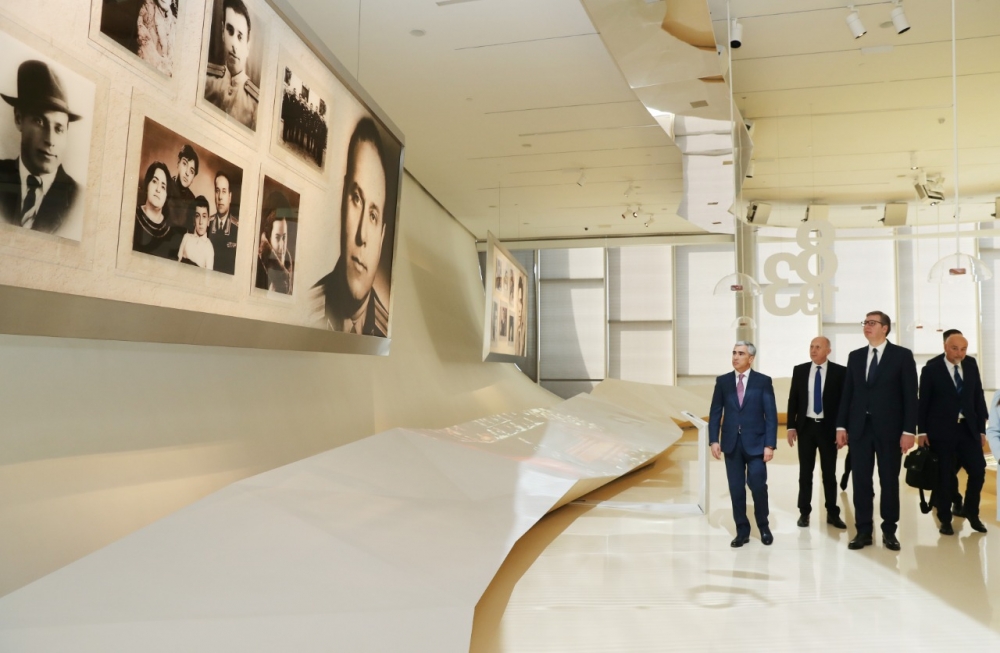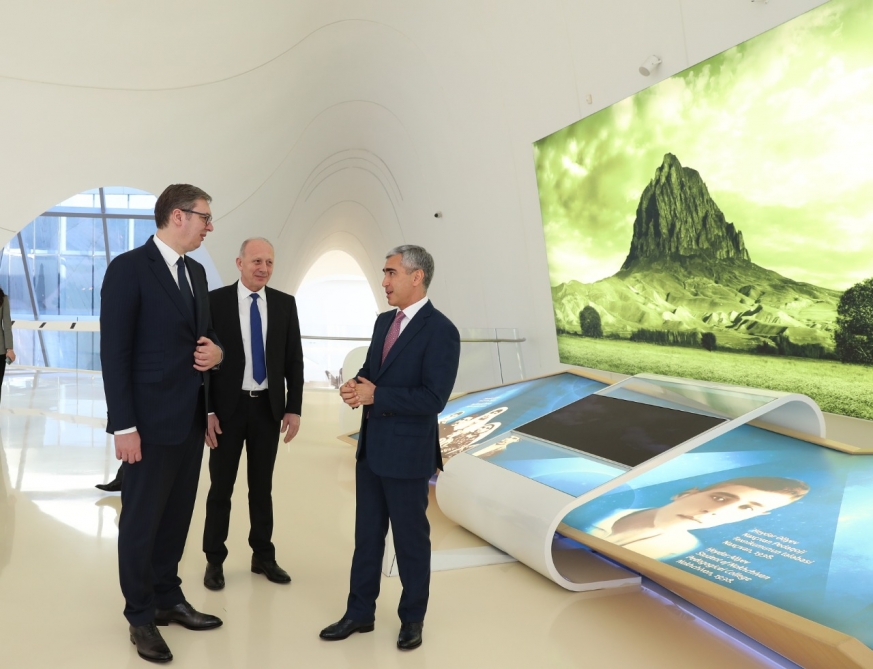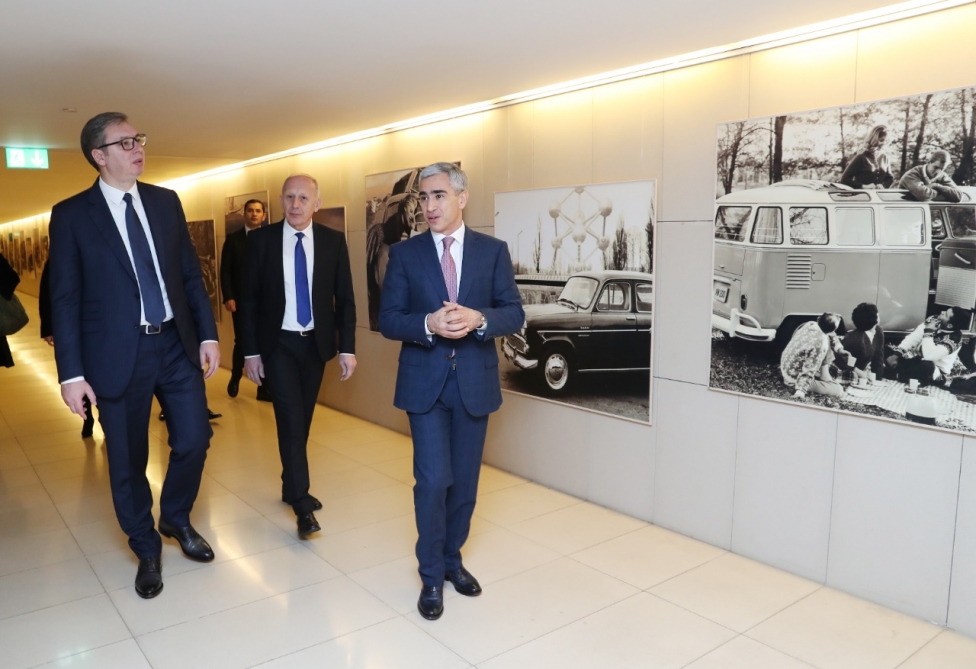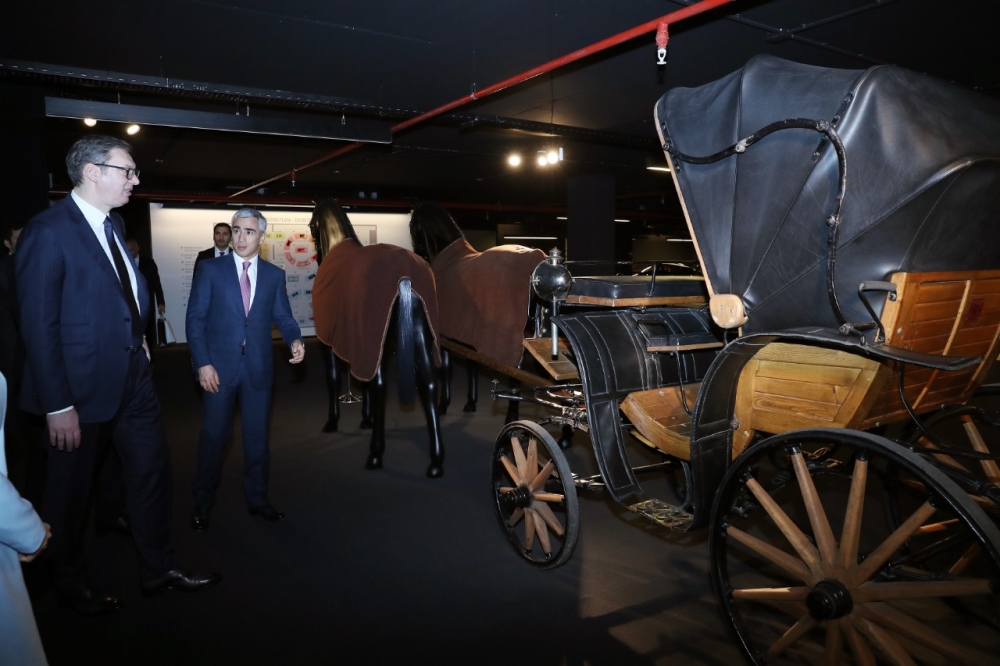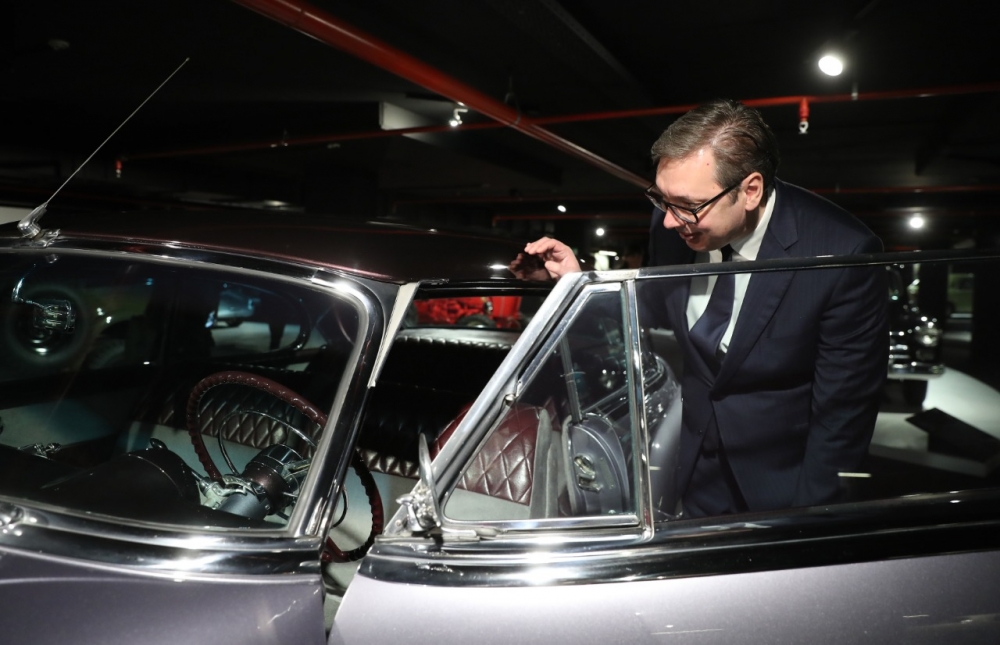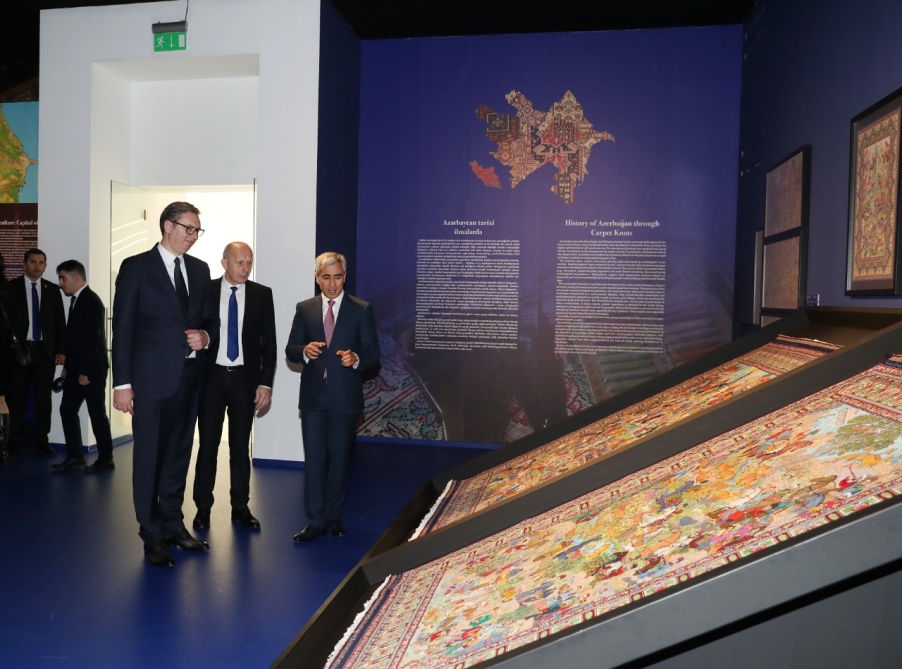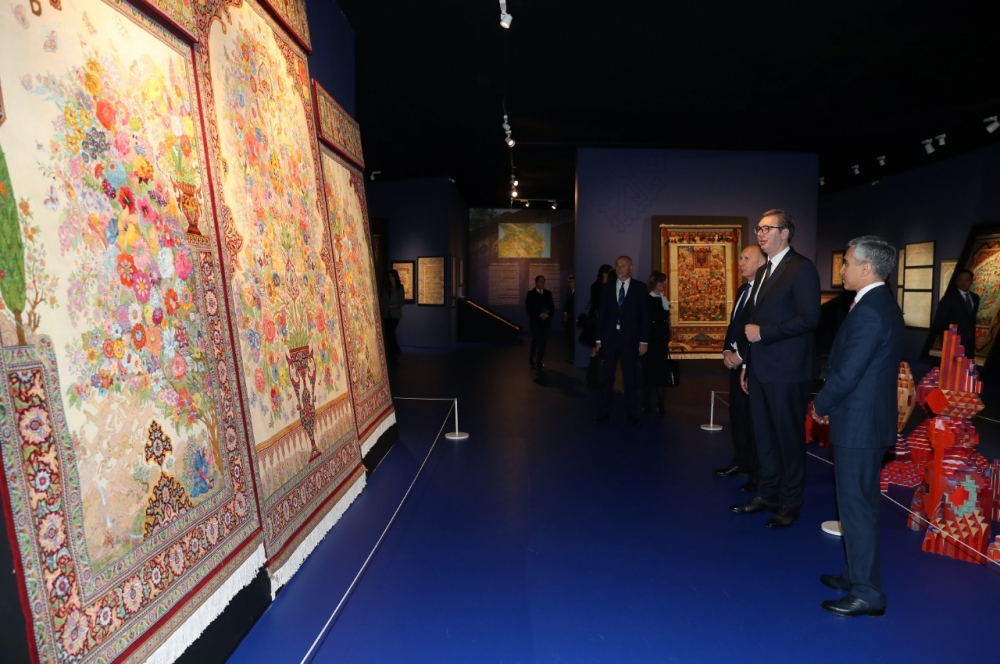
President of the Republic of Serbia Aleksandar Vucic, who is on a working visit to Baku, has visited the Heydar Aliyev Center.
The Serbian President was informed that the center is a cultural complex designed by Iraqi-British architect Zaha Hadid.
The Center houses a conference hall with three auditoriums, a library and a museum. The project is intended to play an integral role in the intellectual life of the city. Located close to the city center, the site plays a pivotal role in the redevelopment of Baku. The Center is engaged in studying and promoting the statehood policy and heritage of national leader Heydar Aliyev.
He was told that the center implements projects to popularize history and culture of Azerbaijan all over the world.
Serbian President Aleksandar Vucic also reviewed the Heydar Aliyev Museum at the Heydar Aliyev Center.
He was told that special attention in establishing the museum, which is intended to perpetuate the memory of the national leader of the Azerbaijani people, was paid to the description of different periods in the history of Azerbaijan, as well as the life and work of great leader Heydar Aliyev. The information available at the museum is presented to visitors in an interactive way. Interesting facts about national leader Heydar Aliyev at the three-storey building of the museum are presented with the aid of photo and video material. The museum is noted for its form and content. Materials are presented in two parallel contexts here.
President Aleksandar Vucic also viewed the “Pearls of Azerbaijan” exhibition, highlighting rich history and culture of Azerbaijan, as well as unique exhibits related to the abundant natural resources, centuries-old history and cultural heritage of the country.
The President of Serbia then viewed the exhibition of classic cars, jointly organized by the Automobile Federation of Azerbaijan and the Heydar Aliyev Center, which features cars produced in Germany, USA, France, Italy, Great Britain and the former Soviet republics since the inception of the automotive industry – that is, from the end of the XIX century.
